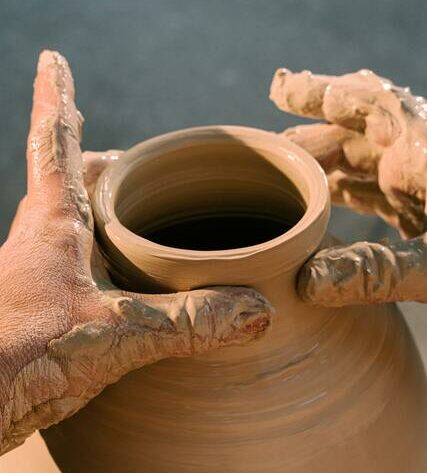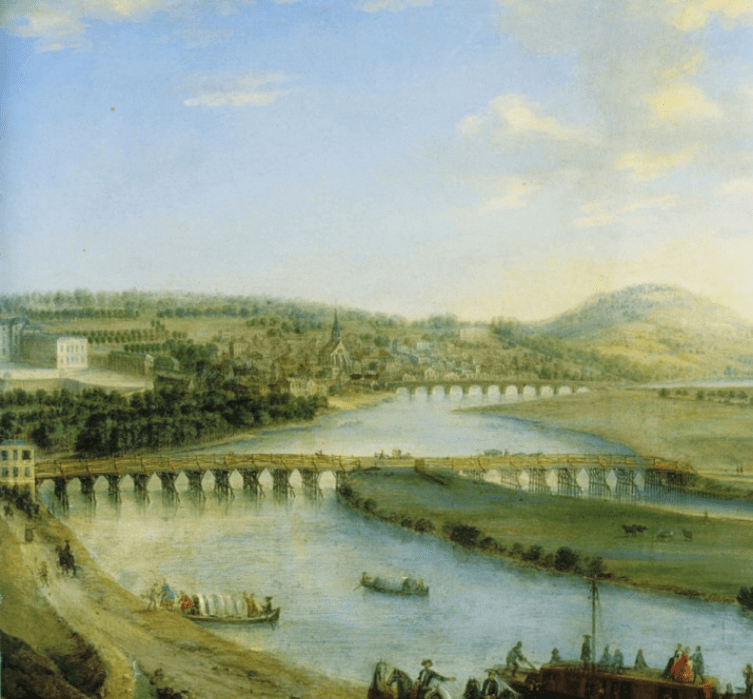






HISTORY
OF THE CITY
Boulogne-Billancourt: A brief history
Here, we want to give you an insight into the amazing story of Boulogne-Billancourt, a tale which is sure to pique your interest and encourage you to visit our city. Who knows, you might even be surprised by what you discover…




HISTORY
OF THE CITY



Boulogne-Billancourt: A brief history
Notre seule ambition est ici de lever partiellement le
voile sur l’étonnante histoire de Boulogne-Billancourt.
Objectif : créer l’envie et susciter le désir de découvrir
et de visiter notre ville. Pour y parvenir, laissez-nous
vous surprendre….
. The foundations of the Notre-Dame Church date back to Philippe Le Bel in the 13th century.
However, written evidence points to a 12th Century farm owned by the Abbey of Saint-Victor, suggesting there were buildings in Boulogne-Billancourt pre-dating the first foundations of the church.
In around 1189, one of the first bridges crossing the Seine was erected in the Saint-Cloud district. What became known as Boulogne-Billancourt in the 19th century (1860), was then known as Menuls-les-Saint-Cloud. The city is still in touch with this past, almost 1,000 years on.
.The laundry facilities here used to wash Paris’ laundry
Under the reign of Louis 14th, Boulogne had nearly 30 laundry workshops. The advent of chlorine that disinfected and bleached laundry (around 1789) was a landmark moment for the laundering industry.
Throughout the 19th century, laundry and ironing workshops were the city’s principle economic resource. As other industries rise, this trade is in a gradual decline and will continue until the end of the 40s.
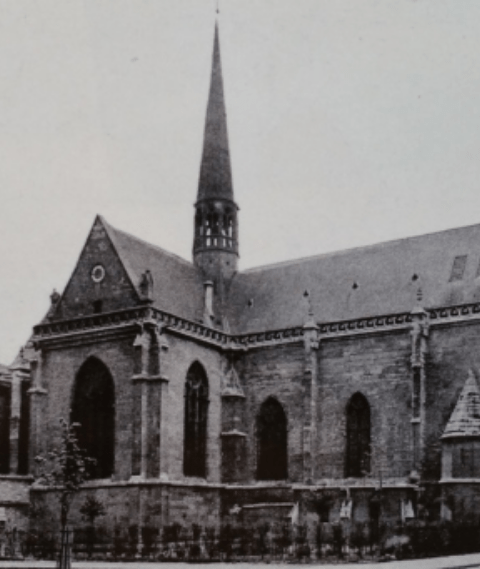





. The foundations of the Notre-Dame Church date back to Philippe Le Bel in the 13th century.
Mais avant même les premières fondations de l’église au XIIIème, c’est au XIIème que les premières traces écrites sur le site actuel de Boulogne-Billancourt apparaissent, avec une ferme détenue par l’Abbaye de Saint-Victor. Un premier pont semble avoir été lancé sur la Seine à hauteur de Saint-Cloud vers 1189. Ce qui au XIXème allait devenir Boulogne-Billancourt (1860) se dénommait alors Les Menuls-les-Saint-Cloud. La ville garde encore les traces de ce passé, vieux de près de 1.000 ans.
.The laundry facilities here used to wash Paris’ laundry
Sous le règne de Louis XIV le site de Boulogne comptait déjà près de 30 blanchisseries. C’est vers 1789 que le blanchissage fait un progrès décisif, avec l’apparition du chlore qui désinfecte et blanchit le linge. Durant tout le XIXème siècle, les ateliers de blanchisserie et de repassage constituent la principale ressource économique de la cité. En déclin progressif, alors que d’autres industries prennent leur essor, cette activité perdurera jusqu’à la fin des années 40.
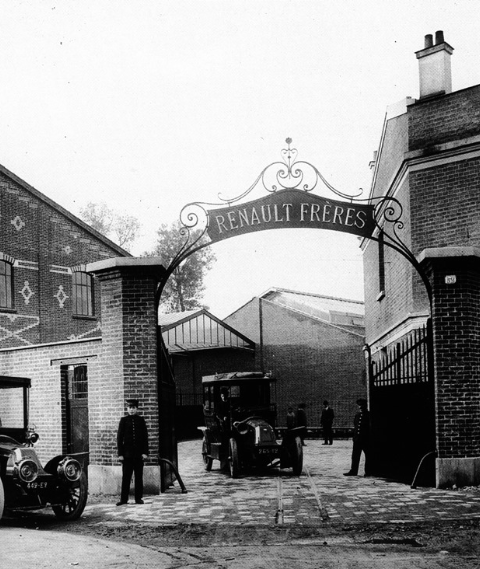


. Voisin, Farman and other manufacturers built their planes in Boulogne-Billancourt
Fous volants, passionnés de vol, ingénieurs, industriels ou riches investisseurs et mécènes se sont souvent retrouvés à Boulogne-Billancourt. C’est la première guerre mondiale et le besoin d’avions militaires qui favorisa l’éclosion de nombreux ateliers de construction aéronautique; une période dont Maurice Farman profita le mieux. Ateliers Voisin dans la Rue de la Ferme ; Ateliers Robert Esnault-Pelterie dans la Rue des Abondances puis Rue de Silly ou encore Ateliers Farman, Rue de Billancourt… la ville fut l’une des capitales mondiales de l’aventure aéronautique du XXème siècle.
. The first gearbox was designed and manufactured here in our city
C’est à Boulogne-Billancourt au milieu des années 1890 que toute l’histoire Renault commence. Louis Renault y installe alors un atelier de fortune au fond de la propriété familiale située Rue du Cours. Il y construira de sa propre main sa première automobile. L’extraordinaire essor de Louis Renault ne fait que commencer. Il achète un vieux hangar sur l’Ile Seguin et au fur et à mesure du succès, il conquerra de nombreux terrains – non sans difficultés et rebondissements – jusqu’à posséder la quasi intégralité du sud de la ville qui garde à jamais la marque de cette aventure industrielle hors du commun. L’ultime automobile Renault (une R4) est sortie des chaines en 1992.
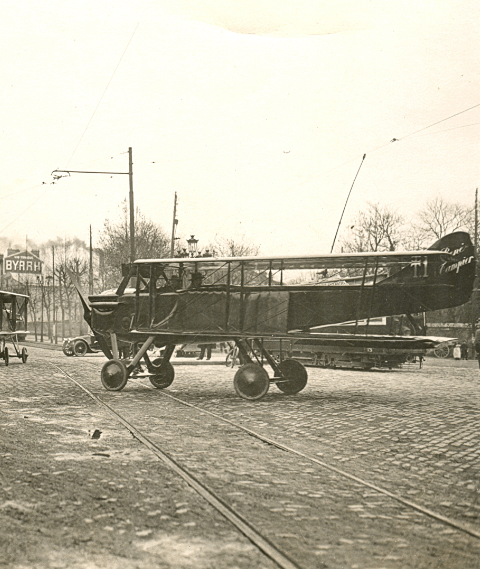


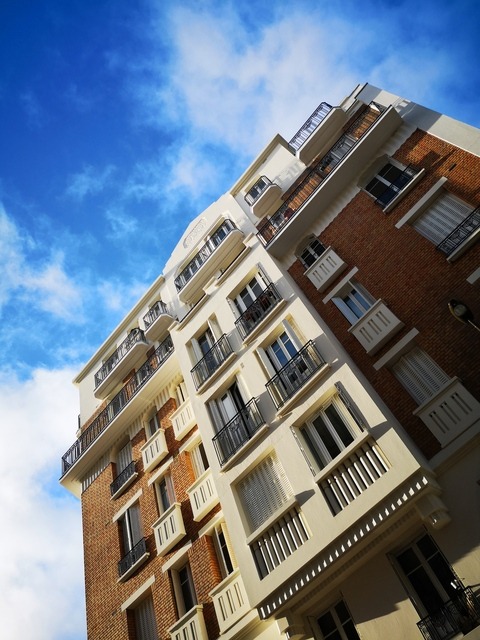

. A city of art and architecture
Although Boulogne-Billancourt has experienced an incredible industrial boom, this hasn’t lessened its status as a centre of art and architecture. World-renowned painters and sculptors have made it their home, as have master art casters, glassmakers and ceramists (and a lot of art patrons, too). Among the many stars that have settled in Boulogne-Billancourt, you’ll find names such as Paul Landowski, the sculptor, or Charles-Édouard Jeanneret (Le Corbusier), the great architect.
The city knows how to maintain this great cultural tradition and has become one of the biggest names in the “Valley of Culture” of the 21st century.
So… if you want to learn more about the incredible history of Boulogne-Billancourt and see everything this city in the Ile-de-France has to offer, why not pay us a visit? The Tourist Office will provide you with everything you need to make your stay unforgettable.



. Voisin, Farman and other manufacturers built their planes in Boulogne-Billancourt
Flying enthusiasts, engineers, industrialists as well as wealthy investors and patrons were no strangers to Boulogne-Billancourt. The First World War was raging, and the need for military aircraft was the driving force behind the opening of many aviation construction factories. This was a period of time during which Maurice Farman’s company prospered.
There was the Voisin factory on Rue de la Ferme; Robert Esnault-Pelterie’s factory on Rue des Ébondances and, later, Rue de Silly… even Farman’s factory on Rue de Billancourt… the city was a world leader in aeronautical ventures during the 20th century.
. The first gearbox was designed and manufactured here in our city
Renault’s story begins in Boulogne-Billancourt in the mid-1890s. Louis Renault built a makeshift workshop at the back of his family home on Rue du Cours and, here, he would build his first car. And this was only the beginning of Louis Renault’s unprecedented rise to success. He eventually bought an old hangar on Seguin Island and, as his success grew and grew, he continued to carve space for himself in the automotive industry.
Despite the difficulties and setbacks he faced, he went on to possess almost the entire south of the city. To this day it still retains traces of this extraordinary industrial adventure. The last Renault car (a R4) to be produced in this factory came out in 1992.
. Boulogne-Billancourt: the historical heart of world photography and cinema
Before cinema came the camera! It was in Boulogne-Billancourt in 1882 that the scientist Etienne-Jules Marey invented the “chronophotographic gun”, which was able to record birds in flight through images. And so, the technical foundations for the art of cinema were born. In 1926, Henri Diamant-Berger founded Billancourt Studios (Quai de Point du Jour), and other film studios would then go on to appear in Rue de Silly and Rue Jean-Baptiste Clément. The directors would also build huge, open-air sets.
Between 1930 and 1960, many films that went on to leave their mark on world cinema history were shot in Boulogne-Billancourt: “Napoleon” by Abel Gance, “Fanny” by Marcel Pagnol, “Madame Bovary” by Marc Allégret, “La Chienne” and “The Grand Illusion” by Jean Renoir, “The Lovers of Verona” by André Cayatte and Jacques Prévert, “Juliette, or Key of Dreams” by Marcel Carné, “The Roots of Heaven” by John Huston or “The Longest Day" by Darryl Zanuck….





. A city of art and architecture
Although Boulogne-Billancourt has experienced an incredible industrial boom, this hasn’t lessened its status as a centre of art and architecture. World-renowned painters and sculptors have made it their home, as have master art casters, glassmakers and ceramists (and a lot of art patrons, too). Among the many stars that have settled in Boulogne-Billancourt, you’ll find names such as Paul Landowski, the sculptor, or Charles-Édouard Jeanneret (Le Corbusier), the great architect.
The city knows how to maintain this great cultural tradition and has become one of the biggest names in the “Valley of Culture” of the 21st century.
So… if you want to learn more about the incredible history of Boulogne-Billancourt and see everything this city in the Ile-de-France has to offer, why not pay us a visit? The Tourist Office will provide you with everything you need to make your stay unforgettable.


Boulogne-Billancourt today




Boulogne-Billancourt today
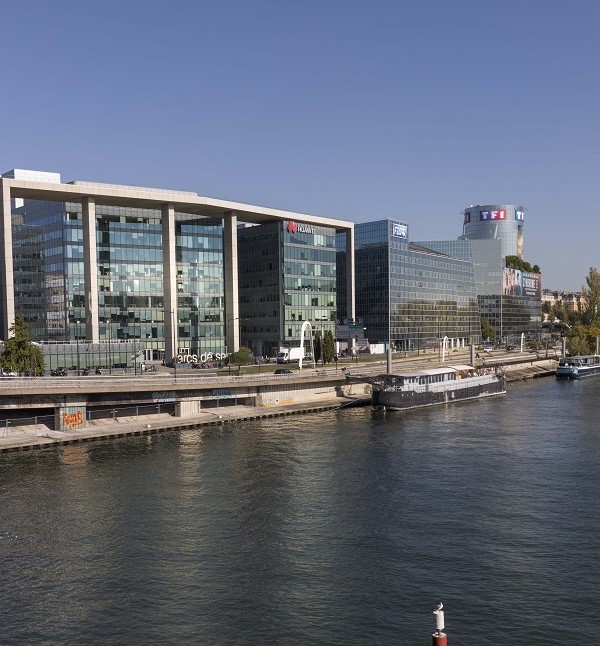


With 121,334 inhabitants, Boulogne-Billancourt is the largest city in Ile-de-France after Paris.
A distinctly rich economic fabric
Boulogne-Billancourt continues to attract more and more companies. With more than 15,569 establishments as of 2016, Boulogne-Billancourt is Ile-de-France’s biggest business park after Paris, and was the most sought-after city in the Paris region in the first half of 2018.
A predominant tertiary sector
A city of advertising, audio-visual media and telecommunications, Boulogne-Billancourt benefits from the weighty presence of third sector enterprises.
Boulogne-Billancourt is home to many companies that lead their field, including:
ALTEN, BVA, CEGEDIM , CLEAR CHANNEL FRANCE, HENKEL FRANCE, FRENCH GAMES, LCI, LVMH, RENAULT, SPIE BATIGNOLLES, TBWA, TF1, THOMSON, VALLOUREC, YOPLAIT FRANCE, ROCK, HPE, IPSEN, BOURSORAMA, MICHELINTRAVEL PARTNER, VINCI...
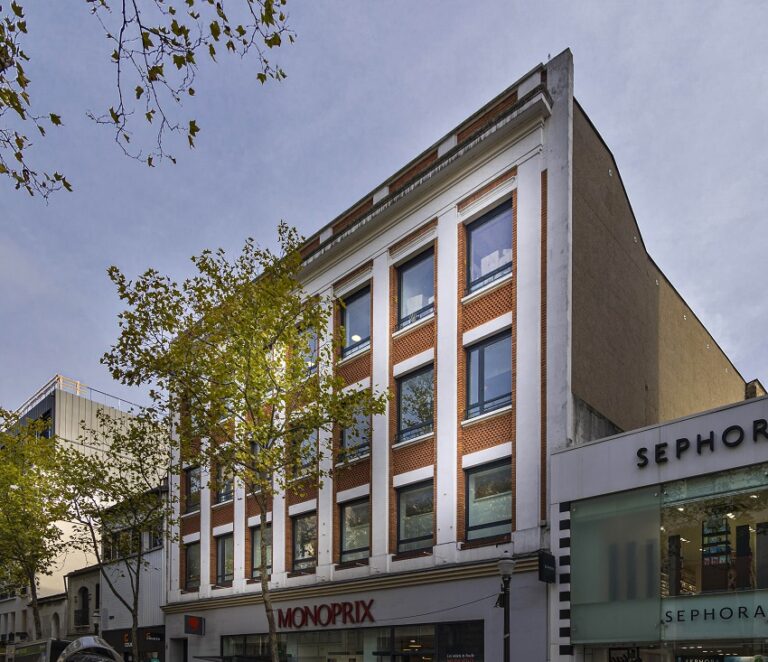


Crafts
Avec plus de mille entreprises artisanales, Boulogne-Billancourt bénéficie d’une des plus fortes densités du département. La Ville intégrait en 2006 8 % de l’ensemble des activités artisanales des Hauts-de-Seine et 10 % du secteur de la fabrication. 1 095 entreprises artisanales étaient alors enregistrées au Répertoire des métiers à la Chambre de métiers et de l’artisanat des Hauts-de-Seine.
With 121,334 inhabitants, Boulogne-Billancourt is the largest city in Ile-de-France after Paris.
A distinctly rich economic fabric
Boulogne-Billancourt continues to attract more and more companies. With more than 15,569 establishments as of 2016, Boulogne-Billancourt is Ile-de-France’s biggest business park after Paris, and was the most sought-after city in the Paris region in the first half of 2018.
A predominant tertiary sector
A city of advertising, audio-visual media and telecommunications, Boulogne-Billancourt benefits from the weighty presence of third sector enterprises.
Boulogne-Billancourt is home to many companies that lead their field, including:
ALTEN, BVA, CEGEDIM , CLEAR CHANNEL FRANCE, HENKEL FRANCE, FRENCH GAMES, LCI, LVMH, RENAULT, SPIE BATIGNOLLES, TBWA, TF1, THOMSON, VALLOUREC, YOPLAIT FRANCE, ROCK, HPE, IPSEN, BOURSORAMA, MICHELINTRAVEL PARTNER, VINCI...






A blend of economic fabrics
While the city is home to a considerable number of large corporations and corporate headquarters, it’s also extremely popular amongst small companies, shops and craftspeople. It’s characterised by a blended economic fabric and by the diversity of companies within it, both in terms of their size and their economic activities.
Nine out of ten companies have fewer than 250 employees.
Key sectors
54,4% Business Services
50,6% Trade, Transportation, Accommodation and Food Services
16,4% Services for individuals
2,9% Industry
5,8% Construction
A major employment centre
There are more than 90,000 salaried jobs in the city. 85% of these are within the tertiary sector, mainly in business services. Boulogne-Billancourt has a workforce of 64,000, of which almost 70% are managers or employees of an intermediate profession.
Crafts
Boulogne-Billancourt enjoys one of the biggest craft industries in the region, with more than a thousand craft companies setting up shop here.
In 2006, the city integrated 8% of all craft activities in Hauts-de-Seine and 10% of the manufacturing sector.
1,095 craft enterprises were then registered in the Trades Register in the Chamber of Trades and Crafts Hauts-de-Seine.
